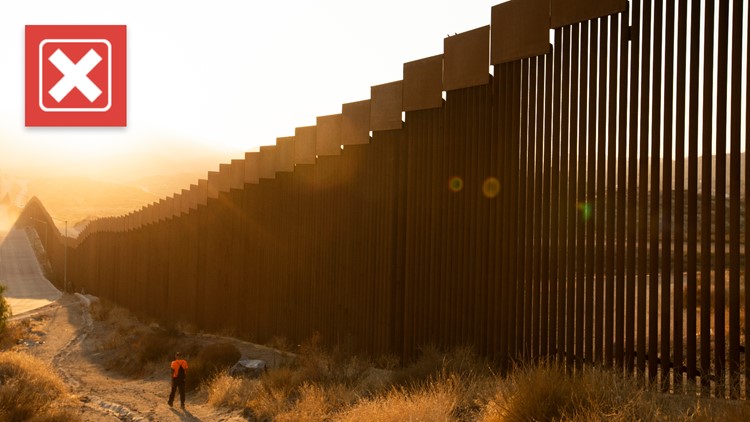When Title 42 expires, the U.S. will transition back to immigration procedures outlined in Title 8. Here’s what that means.


For the first time in more than three years, the U.S. is changing its immigration policy for asylum seekers, or people who are seeking protection from persecution in their country.
Title 42, which allowed federal authorities to expel migrants without the opportunity to apply for asylum, expires on May 11. It was implemented to limit the spread of COVID-19 during the pandemic.
Once Title 42 ends, the U.S. will resume processing asylum claims at ports of entry.
This has prompted some people online to claim that the U.S. will have a “wide open border” when Title 42 ends. Other people, including a VERIFY reader, are wondering if that’s true.
THE QUESTION
Will the U.S. have an “open border” when Title 42 ends?
THE SOURCES
THE ANSWER
![]()
No, the U.S. will not have an “open border” when Title 42 ends. The government will transition back to immigration procedures outlined in a body of federal law known as Title 8.
WHAT WE FOUND
Title 42 ends on Thursday, May 11 and immigration procedures outlined in Title 8 of U.S. Code will resume the following day. But that doesn’t mean the U.S. border is “open” for anyone to enter the country without permission.
Though the end of Title 42 does not mean the border is “wide open,” as some people have claimed, the Department of Homeland Security (DHS) is expecting an increase in migration. The agency announced on May 2 that additional personnel would be sent to the border to offer assistance for 90 days after Title 42 expires.
Since the 1940s, U.S. immigration law has been governed by Title 8 of the U.S. Code. But some provisions of Title 8 were suspended during the COVID-19 pandemic under a different law called Title 42.
Title 42 is a section under the Public Health Service Act, which President Franklin D. Roosevelt signed into law in July 1944. That section allows federal health authorities to prohibit people who pose a danger associated with disease from entering the United States.
In March 2020, the Centers for Disease Control and Prevention (CDC) director under former President Donald Trump invoked Title 42 in order to slow the spread of COVID-19. Title 42 is set to expire on the same day that the Biden administration is ending twin national emergencies for addressing COVID-19.
Both DHS and the State Department explain that when Tile 42 ends, authorities will return to using immigration processes under Title 8.
Here’s a breakdown of what changes.
Under Title 42, many asylum seekers were returned back to Mexico or their home country without having their case heard, the National Immigration Forum explains. Now, with its expiration, the federal government will resume regularly processing legal claims for asylum at ports of entry beginning Friday, May 12.
Asylum status is a form of protection available to people who meet the definition of a refugee, and are already in the United States or are seeking admission at a point of entry. A person seeking asylum protection must apply for it within one year of their arrival to the U.S.
The federal government will also reimpose stricter penalties for illegally crossing the border under Title 8. Those penalties can include deportation, at least a five-year ban on reentry and criminal prosecution, DHS and the State Department say.
These penalties were not enforced under Title 42, according to the National Immigration Forum.
“Because they are not based in existing immigration or border laws, Title 42 expulsions carry zero penalties for repeat entries and they do not distinguish between those with meritorious claims to protection and those attempting to enter the U.S. undetected,” the Forum says.
DHS also says it will work to quickly remove people who arrive at the border to claim asylum, but who cannot prove they have a credible fear of persecution or harm in their home country.
The VERIFY team works to separate fact from fiction so that you can understand what is true and false. Please consider subscribing to our daily newsletter, text alerts and our YouTube channel. You can also follow us on Snapchat, Twitter, Instagram, Facebook and TikTok. Learn More »
Follow Us
Want something VERIFIED?
Text: 202-410-8808
.png)









 English (US) ·
English (US) ·